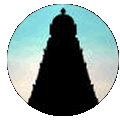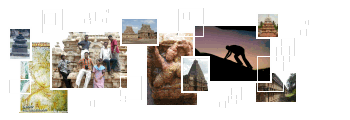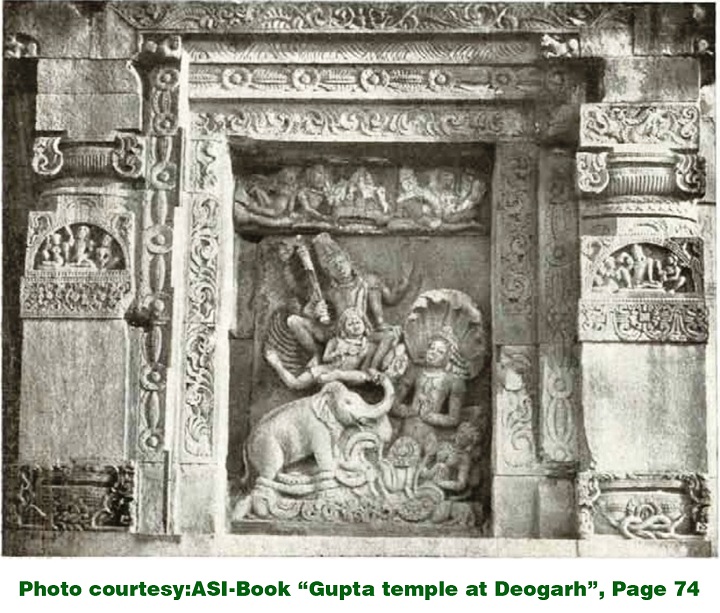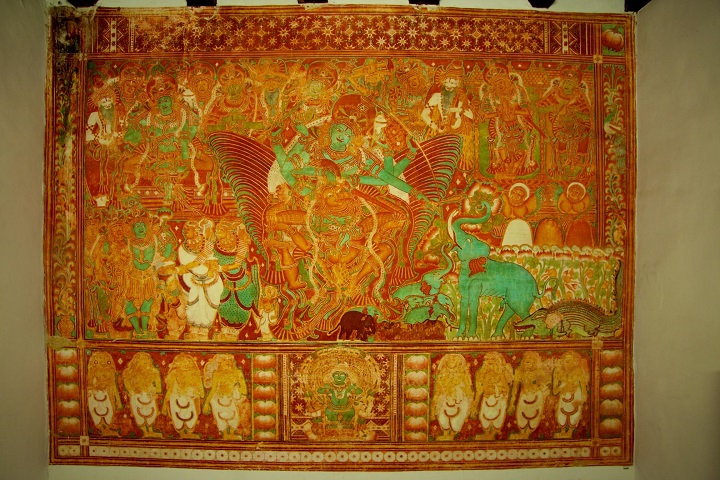 |
 |
 |
http://www.varalaaru.com A Monthly Web Magazine for South Asian History [187 Issues] [1839 Articles] |
 |
 |
 |
http://www.varalaaru.com A Monthly Web Magazine for South Asian History [187 Issues] [1839 Articles] |
|
Issue No. 174

இதழ் 174 [ ஜனவரி 2024 ] 
இந்த இதழில்.. In this Issue.. 
|
It is “Markazhi month”, this month is being dedicated for worshipping either lord Vishnu of SriVaishnavam or lord Shiva of Sri Saivam, this great devoting cult is well established and guided by Alwar Srimathy Andal of SriVaishnavam and the great metaphysical divine poet who is none other than the great author of “Thiruvachagam” and “Thirukkovaiyar”- Sri.Maniccavachakar of SriSaivam respectively from their great verses of “Thiruppavai” and “Thiruvempavai” Incidentally both were lived in 9th century C.E, Where both these SriSaivam and SriVaisnavam revived well and attaining its peak reach ….. Two days back (In the month of Markazhi) the author of this article visited a Shiva temple at “Thiruvalanchuzhi” near Kumbakonam, While visiting a shiva temple in Markazhi month he finds an interesting miniature sculpture of “Gajendra Moksham” in the west side of South Gopura of Thiruvazhanchuzhi temple. ”குண்டு நீருறை கோளரீ மத யானை கோள்விடுத்தாய் உன்னைக் கண்டு மாலுறுவோங்களைக் கடைக் கண்களால் இட்டு வாதியேல், வண்டல் நுண் மணல் தெள்ளியாம் வளைக் கைகளால் சிரமப்பட்டோம், தெண்டிரைக்கடற் பள்ளியாய் எங்கள் சிற்றில் வந்து சிதையேலே” ”A verse by Srimathy.Andal in her Nachiar Thirumozhi” mentioning Gajendra Moksham. “Gajendra Moksha” - The Liberation of Gajendra is a Puranic legend from the 8th Skandha of “Bhagavad Purana”, one among the most sacred books in Hindu tradition  (The Miniature sculpture of Thiruvalanchuzhi south gopura)  (The location of the sculpture shown using the arrow) The story of Gajendramoksha is narrated in the Bhagavatha Purana for the very first time. After Bhagavatha Purana the story is referred by Nilamata, Skanda and Vamana Puranas. In this moving episode, Lord Vishnu came down to earth to protect Gajendra, the Elephant from the clutches of Makara, the Crocodile and awards him moksha or salvation and goes to Vaikuntha with Lord Vishnu.This story was narrated by Sri Suka to Emperor Parikshit, upon request. There once lived a king names “Indradyumana”, who was a great bhaktha of Bagavan Sri Vishnu. As is the nature of all devotees, he considered his puja as the most significant part of his daily routine. One day while he engaged in puja, a saint came to visit him, because of his preoccupation he could not recieve the saint properly. This resulted with a curse from the saint saying: “since you behave like an imperious elephant, become one.” When he was reborn as an elephant named Gajendra (King of Elephants) who used to live in a garden which was created by Varuna. This garden was situated in the beautiful mountains of Trikuta in ancient India. Gajendra ruled over all the other elephants in the herd. One hot summer day, he was leading his herd to a lake to cool off in its fresh waters. Suddenly a crocodile living in the lake emerged from the waters attacked Gajendra and caught hold of Gajendra’s leg and started dragging him into the lake. Finding himself in this calamity by the will of GOD, the mighty elephant tried to extricate himself. However, Since the crocodile is a marine creature, its strength is maximum in water. Gajendra an elephant on the other hand, being a land animal, has a greatly reduced strength in water. In spite of his immense efforts he was unable to rescue himself from the crocodile's clutches. All his family, relatives and friends gathered around to help him, but in vain. The crocodile wouldn't simply let go. When they realised that ‘death’ has come close to Gajendra, they left him alone. He was the titan of a big clan; but all deserted him at the end. He pondered over this for a long time. Through the grace of GOD Gajendra came to a conclusion, “Even my most powerful male friends could not rescue me from this plight; what then to speak of my poor female elephants! Indeed, this is nothing but the noose of providence tightening around me. Nobody in this world is truly mine. Kala is all powerful. It slithers across like a serpent, consuming all that comes in its way. Only the creature who, though fearful of Kala, Even death fears Bhagawan Vishnu. He is the refuge of all. It is to him that I now surrender myself.” If we reflect on it calmly, we will realise that there is no house in the world where the story of Gajendra does not play out. It happens in every house. The story also telling us a great philosophy through Gajendra. Gajendra is the individual soul who is enjoying a material life in the lake of life. In the same house where we enjoy ourselves, Kala lies in wait. We are careless, but kala is ever vigilant. Kala grabs a man by the legs, his family tries to protect him,but they are not successful.only when Bhagavan, who is the “Kala” of Kala comes carrying His Sudarshan-chakra, are we freed from the pangs of suffering. The word Sudarshan means the “true way of seeing” (Su-Dharshan) . The true way of seeing is seeing GOD in everything. This is the liberating vision given by GOD to His devotees. Gajendra called to God Vishnu to save him, holding a lotus up in the air as an offering. It is believed that Gajendra's foot was held by the crocodile for over a thousand of years. The bhakthi Gajendra had performed in his previous birth came to his rescue and he was granted the memory of Bhagavan Vishnu at the end. Gajendra sung out “shuklambaradaram vishnum shashivarnam chaturbhujam| prasanna vadanam dhyayet sarva vighnopashantayet||” “I take refuge in You O lord, who remove all fetters of those surrendering unto You. I bow to you Who exist in the hearts Of all creatures. GOD! Take me to the abode where Kala can never grab me again,” His thuthi goes on… Then Gajendra specified what he wanted from GOD: “Lord! You are difficult to be attained by people who are attached to material wealth like wife,children,money…etc, May You, the lord of infinite mercy, rescue me from the clutches of samsara (the alligator) . However, my wish is not extricate myself from this alligator and continue to survive here in this body. What interest have I in this elephant body which is forever enveloped in the darkness of ignorance? What I crave for is eternal emancipation from that veil of ignorance which shrouds the spiritual light of the soul; a veil, which can be destroyed only by the knowledge that You, the supreme soul, is the soul of all. “I bow to you, Who protects those who resort to You for shelter; but whose path is inaccessible to those whose senses are directed towards materiel objects.” Hearing his devotee's call and a prayer, Lord Vishnu rushed to the scene. As Gajendra sighted the Lord coming, his Sudharshana Chakra separated the crocodile's head from its body and Gajendra prostrated before the Lord. Vishnu informed Gajendra that he, in one of his previous births, was the celebrated King Indradyumna, a Vishnu devotee, but due to his disrespect to the great Sage Agastya, he was cursed and had to undergo this life.Thus he reached SriVakundam. The moral of the Gajendra story is that even if we lose every scope of help from everywhere we must not lose faith in God. God never leaves his worshipper and believers alone or in trouble. Therefore remember to have faith in god and never lose hope.   Gajendra Moksham-The largest mural painting in Kerala, it is located in the Krishnapuram Palace, Kayamkulam. It depicts Vishnu rescuing the cursed elephant, Gajendra and liberating him from the physical and spiritual bonds that chained him. Thus the article of the author visits a Shiva temple , seeing this sculpture he contemplates the Vishnu more…. It also remembers the author of the famous lines from the epic story Ponniyin Selvan “Sivanum Vishnuvum Onnu, Ithai Ariyadavan Vayile Mannu”. From the Deogarh and kerala pictures we can understand that the story of Gajendra moksham spread across India from centuries together. Have a divine full Markazhi ahead! |

சிறப்பிதழ்கள் Special Issues 

புகைப்படத் தொகுப்பு Photo Gallery 
|
| (C) 2004, varalaaru.com. All articles are copyrighted to respective authors. Unauthorized reproduction of any article, image or audio/video contents published here, without the prior approval of the authors or varalaaru.com are strictly prohibited. | ||